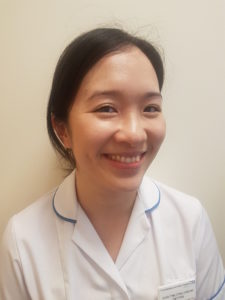12 March 2019
By Tina Cheung, Nutrition Support Lead Dietitian

It will come as no surprise, given the media’s obsession with our weight, that the UK has the second highest rate of obesity in Europe. However, this has greatly overshadowed another epidemic we face. Despite the fact we are one of the wealthiest countries in the world, there were nearly 10,000 cases of malnutrition in the UK between 2017 and 2018.
This Week the Dietetics Team is celebrating Nutrition and Hydration Week and so I wanted to take the time to speak about how we can use diet to give ourselves the best chance of staying healthy and cutting down on the number of people suffering from malnutrition in our counties.
Malnutrition is a major public health issue costing around £19.6billion of the annual health and social care budget. It occurs when a person doesn’t get the correct amount of nutrients from their diet, and can affect any individual whether they are underweight or overweight. However, it is particularly common amongst older people and those who are socially isolated.
If malnutrition is treated effectively; patients are discharged from hospitals sooner, there are fewer healthcare needs in the community, such as GP visits or care at patients’ homes and ultimately fewer hospital admissions and readmissions. This is why improving nutritional screening is a national priority.
The National Institute for Clinical Excellence (NICE) reports that: “improving the identification and treatment of malnutrition is estimated to have the third highest potential to deliver cost savings to the NHS”. With that advice in mind, the Dietetics Team here at the Trust is rolling out the Malnutrition Universal Screening Tool (MUST) and the ‘Think Food’ approach, at the Royal Shrewsbury Hospital and Princess Royal Hospital. This will effectively streamline how malnutrition is detected.
 MUST is a 5-step screening tool used to identify whether an individual is malnourished, at risk of malnutrition or obese. It also includes management guidelines which can be used to develop a care plan. The ‘Think Food’ approach means using ordinary foods and drinks to increase your nutritional intake. In a hospital setting this can be challenging to implement, so often a patient is prescribed a nourishing drink. However, prescription costs for these drinks currently sit at an estimated £99million when education and dietary changes could have the same effect. We want to treat malnutrition with a ‘Think Food’ approach in an acute setting by encouraging one pint of milk, two nourishing drinks (included within a pint of milk) and three nourishing snacks to be offered daily.
MUST is a 5-step screening tool used to identify whether an individual is malnourished, at risk of malnutrition or obese. It also includes management guidelines which can be used to develop a care plan. The ‘Think Food’ approach means using ordinary foods and drinks to increase your nutritional intake. In a hospital setting this can be challenging to implement, so often a patient is prescribed a nourishing drink. However, prescription costs for these drinks currently sit at an estimated £99million when education and dietary changes could have the same effect. We want to treat malnutrition with a ‘Think Food’ approach in an acute setting by encouraging one pint of milk, two nourishing drinks (included within a pint of milk) and three nourishing snacks to be offered daily.
At home, the best way to prevent malnutrition is to eat a healthy, balanced diet. You need to eat a variety of foods from the main food groups, including: plenty of fruit and vegetables, plenty of bread, rice, potatoes, pasta and other starchy food, some meat and dairy foods, and some meat, fish eggs, beans and other non-dairy sources of protein.
On a personal level, I continue to be passionate in treating malnutrition, but I don’t believe that dietitians can do this successfully alone. I firmly believe a multidisciplinary team (MDT) approach is essential as the root causes of malnutrition can be multi-factorial. For example, if an individual has difficulties swallowing, I would seek the expertise of my Speech and Language Therapist colleagues. It is essential we work together as part of a larger team with the ultimate aim of tackling malnutrition in the acute and community setting to improve our patient’s overall wellbeing and quality of life. Nutrition and hydration should be everyone’s business.
